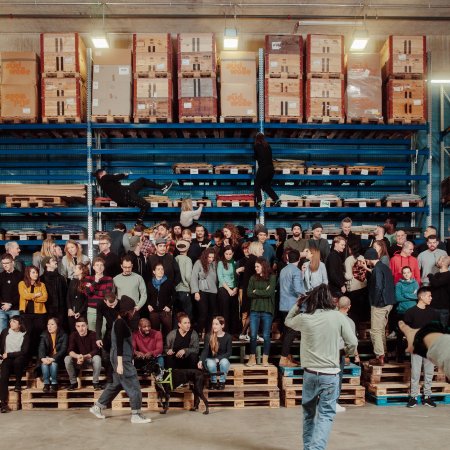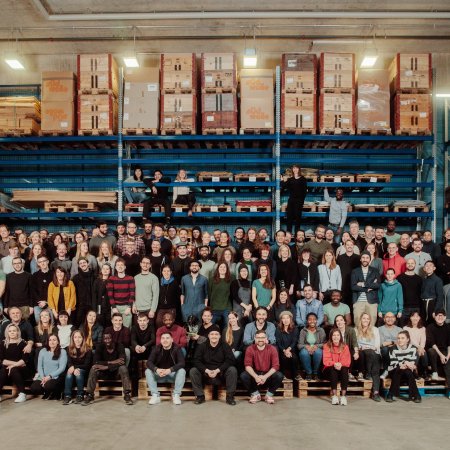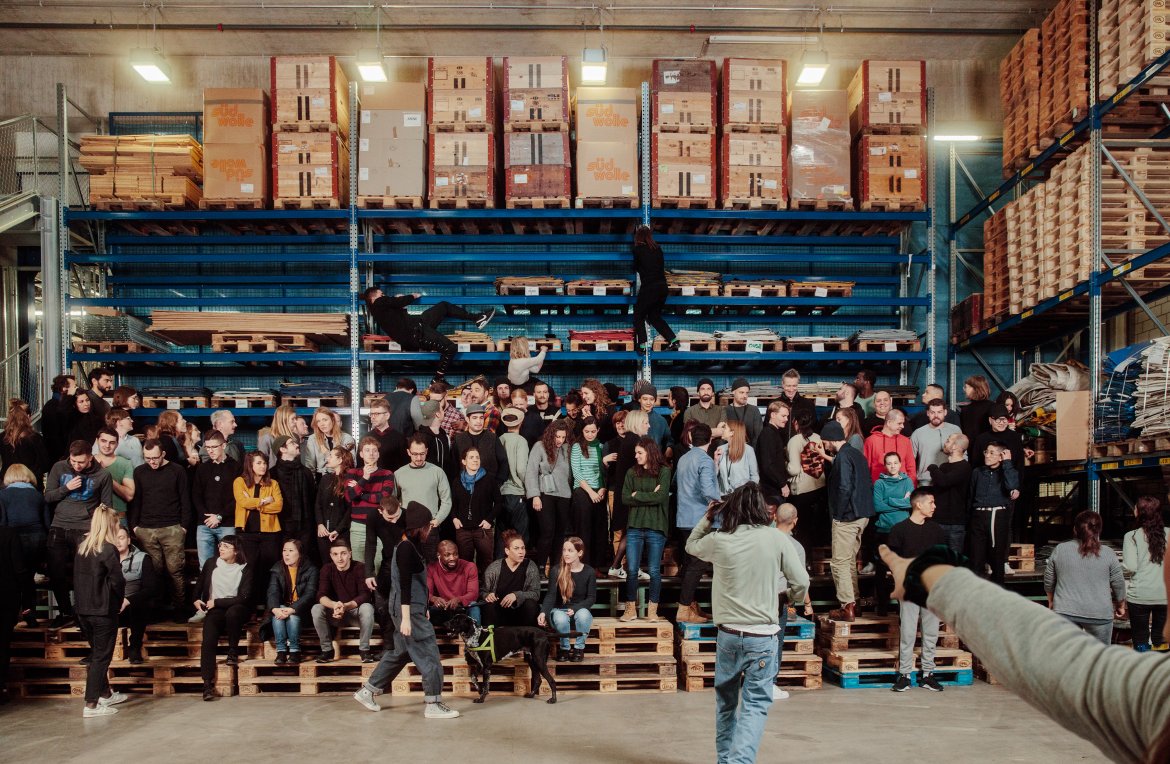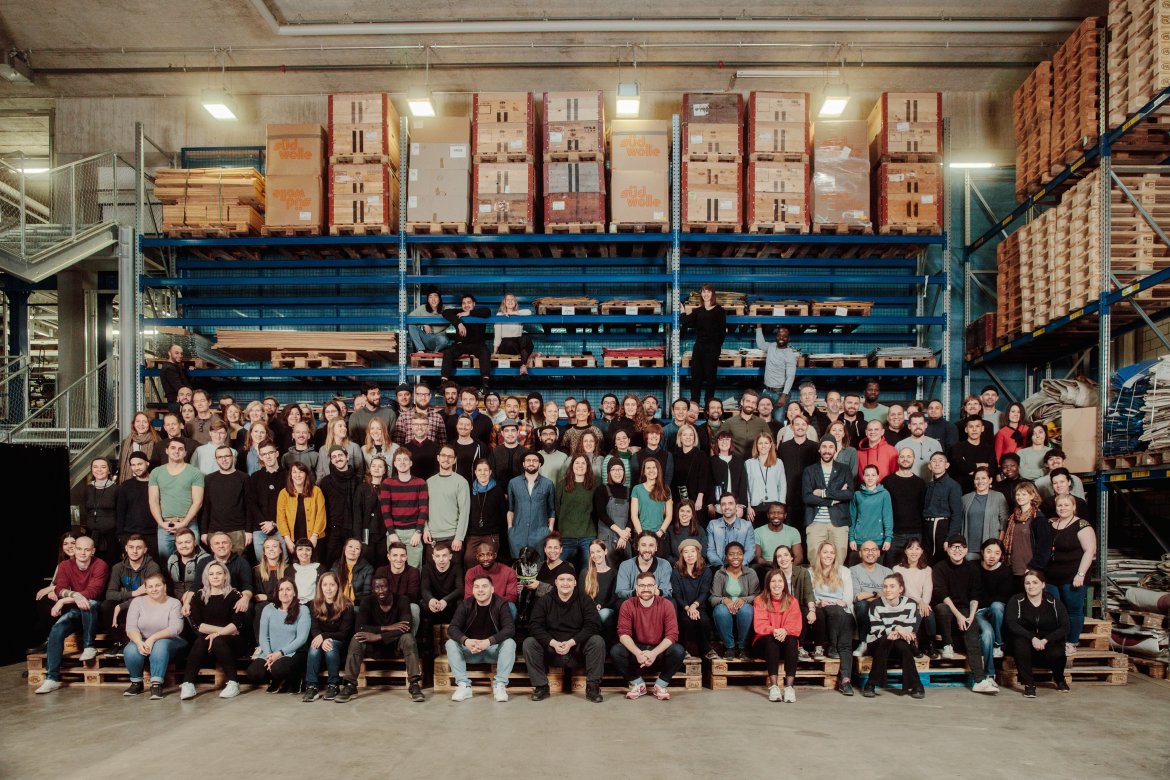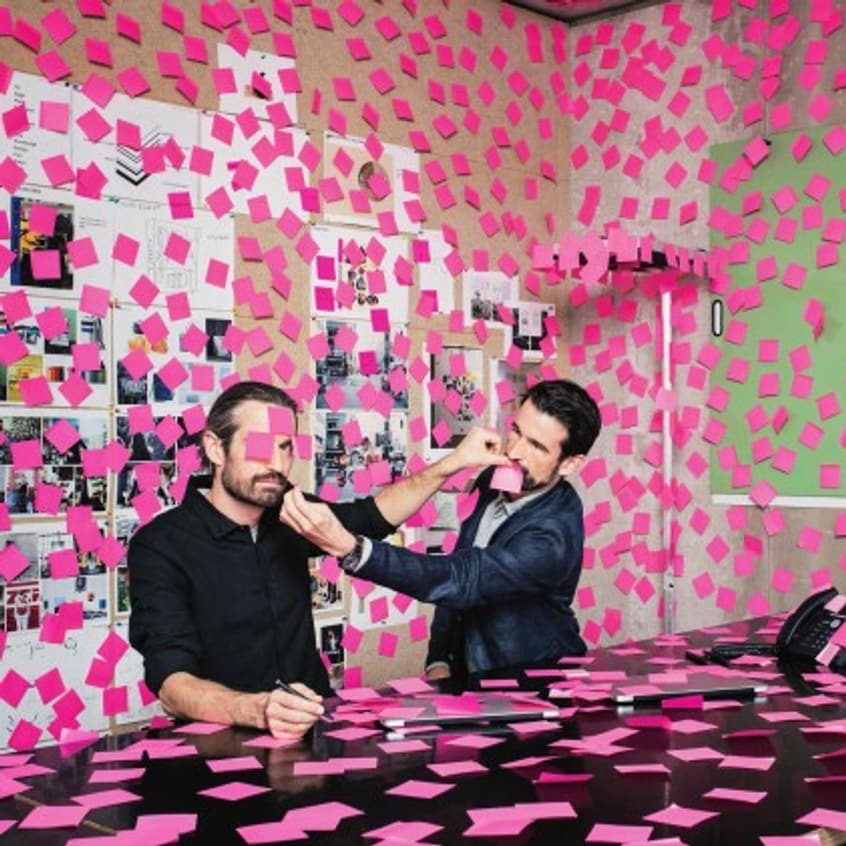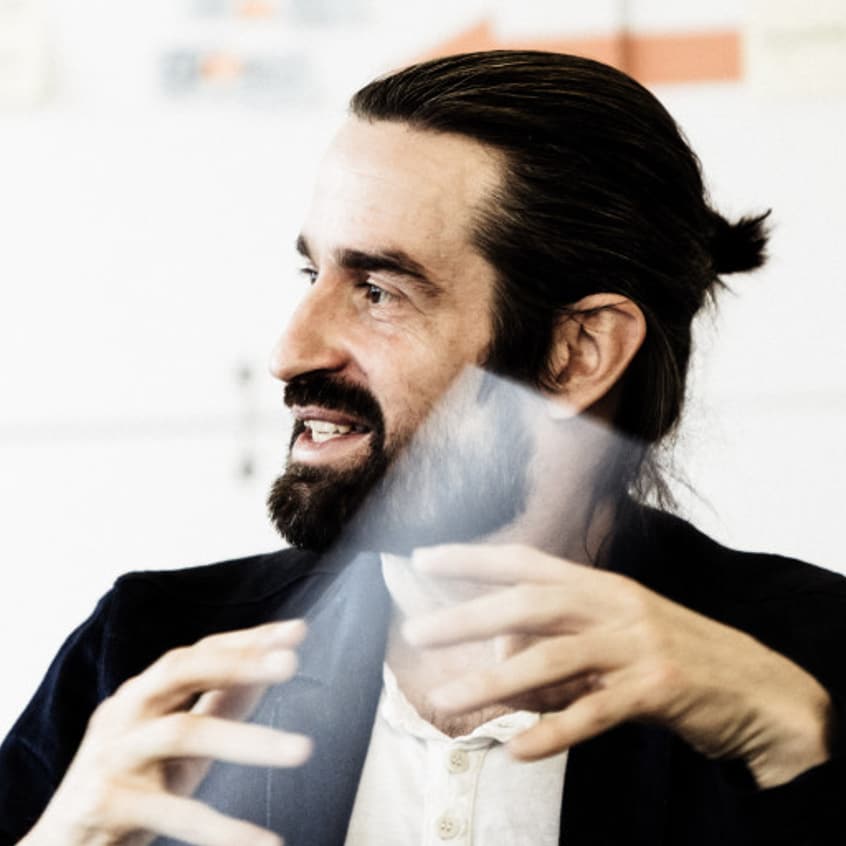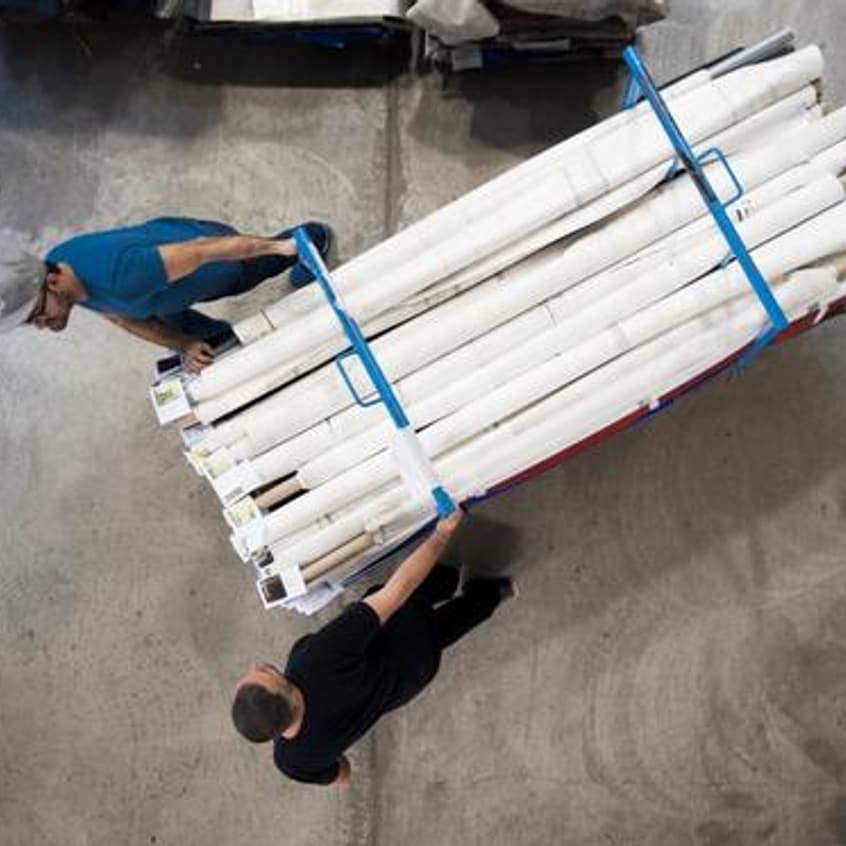Media Overview
FREITAG & SELF-ORGANIZATION
HIGH-RES PHOTO DOWNLOAD
Please mention the photo credit: Roland Tännler
Alpha, Beta, … Holacracy
Since 1993, FREITAG has progressively grown – sometimes at breakneck speed, but generally very healthily, going from a two-man operation to an SME with a 200-strong F-crew. As we continued to develop models, conquer markets and sell ever more bags, FREITAG’s inner workings became increasingly complex. Despite the fact that many things remained unorthodox, the company soon evolved from a startup founded by students into an organization with a traditional structure, i.e. a CEO, management board and departments covering the various stages of the production process. We didn’t know it at the time, but this planted the seed for organizational problems at FREITAG further down the line.
At some point, we realized that our organizational structure and many of our processes had become cumbersome and slow. And with our market environment changing more and more rapidly, we were unable to adapt with the speed and flexibility that we wanted to. How had this happened?
WANT TO GIVE YOUR EYES A REST?
Pascal tells the whole story in this podcast, too.
Over the years, our traditional hierarchical organizational structure meant that the board made most of the decisions with no input from the specialists in the departments themselves. The small management board became a bottleneck and our specialists were getting frustrated.
The result was that the departments were increasingly adopting a silo mentality: instead of direct cooperation between specialists in different departments, work had to go up the hierarchical ladder to the heads of department before going back down to the specialists. This meant that interdisciplinary roles such as product managers found it difficult to achieve their goals, since they had to go through virtually the entire company to get there.
Markus and Daniel Freitag – the founders and owners of our company – were never keen on traditional management roles. As trained set and graphic designers, their passion always lay in the creative side of things. As time went by, it became a challenge for them to find their own place in the company they had founded. Over the years, we gradually realized that if we wanted to enjoy our work and be successful economically, we needed to turn our organization on its head.
Alpha, Beta, …
In early 2015, we began to radically change how our organization works. We wanted to do away with hierarchically organized departments that always mechanically churned out the same work. So we focused on organizing the company like a city, with functional, self-contained cells driven by passion.
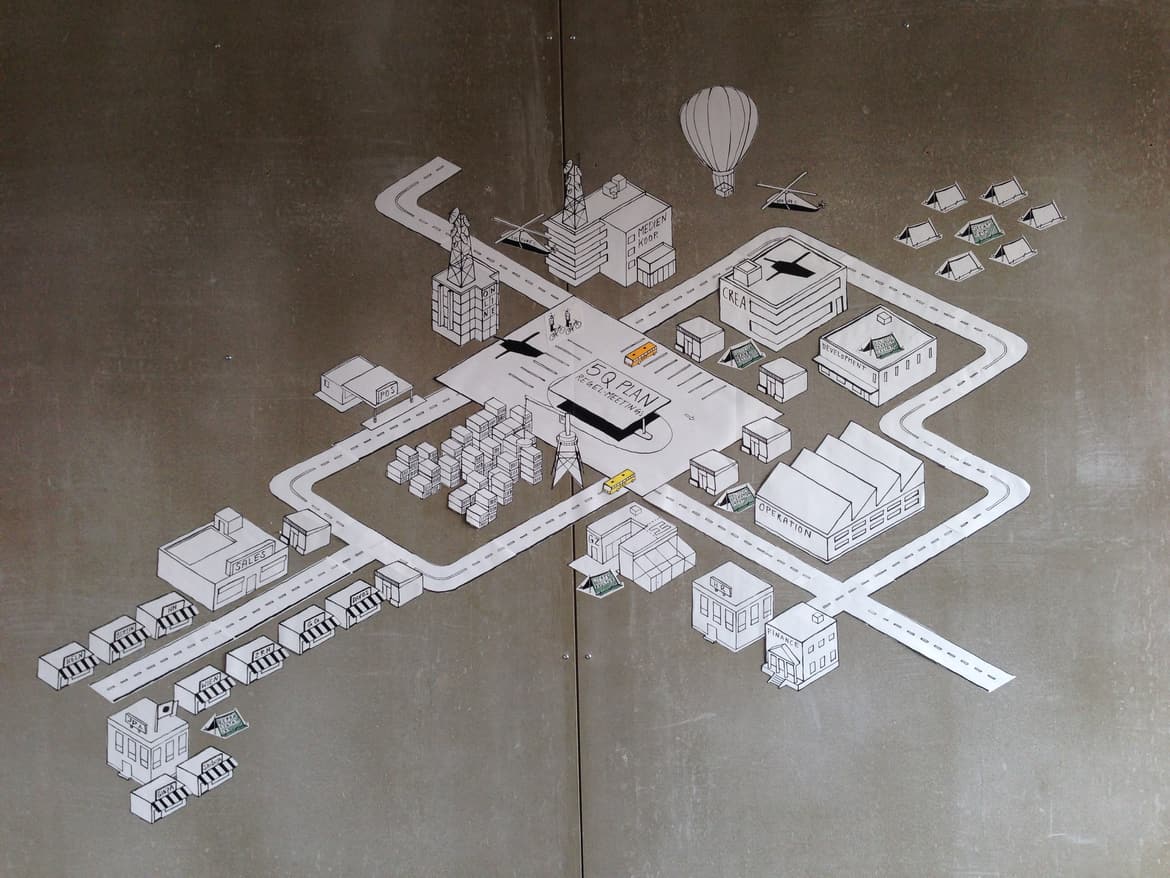
What fascinated us when looking at cities was that in general, the productivity of each resident increases when a city doubles in size. The opposite seemed to be the case for companies: the larger an enterprise becomes, the more its general productivity falls.
Our goal was to work with the entire F-crew to turn FREITAG into a culturally vibrant, productive and liveable city that would be a fantastic place for residents, visitors and the surroundings alike – a place where people would want to stay and which would exude global appeal.
That’s why we replaced our conventional organization chart with a cityscape. We didn’t delay in disbanding the management board, either. This had two outcomes: it resolved the bottleneck the board had created and established a culture of empowerment among the F-crew. Instead of the board we created self-contained cells (envisaged as buildings in our cityscape) and a meeting structure whose purpose was to include all key stakeholders of a particular topic in the decision-making process. This structure meant that there was no longer any need for a CEO to issue instructions left and right. The former members of the management board started to see themselves as coaches rather than bosses from that point on. We settled on a simple name for our new organizational model: ‘Beta’.
«Transparent communication is essential for self-organization.»
We drew up a company-wide action plan to guide us through the process and to make it clear to employees how we were planning to transform FREITAG. We took all internal points of view into consideration when preparing the plan. Once it was ready, the entire company was tasked with following it. Following the cityscape analogy, the plan took on the role of the market square, and we dedicated an area in our factory to it.
... Holacracy
Our journey on the road to becoming a self-governing organization was off to a very good start. Even so, the transformation required a great deal of energy – so much that we lost this initial momentum after just a few months. There were still so many questions to which we had no satisfactory answers: How were people expected to advance their careers without traditional career paths? If there are no more bosses, who would be responsible for training the team? How could we make our meetings more efficient? What policies should the city follow as it continues to develop?
It was clear that there must be others who had tackled these issues before us. And as we looked for organizational approaches that would allow us to divide up responsibility, streamline decision-making processes, dismantle hierarchies and increase agility, we stumbled upon the Holacracy method. After researching it extensively, we took the decision in September 2016 to adopt Holacracy as FREITAG’s organizational operating system.
«Holacracy won us over due to its ability to distribute authority across the company in the form of roles instead of putting it in the hands of a few supervisors and managers.»
That means the organizational structure isn’t fixed; clear processes allow all employees to adapt the system to their requirements whenever they need to. And thanks to structured meetings, these interdependent roles can be synchronized efficiently and regularly.
Roles are defined according to the activities that help the company survive and thrive. Related roles are organized into circles, and each circle and role has a purpose that supports the aspirations of the company as a whole. We assign responsibilities to these circles and roles depending on their purpose.
A HIERARCHY OF SPECIALISTS
The circles and the employees in the various roles make decisions based on their responsibilities. Just because there are no individual supervisors and managers doesn’t mean Holacracy does away with hierarchy entirely. Quite the opposite: Holacracy is a deeply hierarchical system, but one that consistently revolves around expert roles. This way, the hierarchy is distributed across the entire organization and every member of the team can change it via the governance processes whenever they wish. That’s why our organizational chart below states that it was last updated at 2:35 pm on 17 April 2019. Tonight, it might look already look very different.

Circles generally come with two key roles that serve as a kind of liaison to the next circle up in the hierarchy. The ‘Lead Link’ role involves introducing information to the circle, setting priorities and filling roles. The role of a ‘Rep Link’ is to communicate requests from the circle to other circles. One example is to lift any restrictions resulting from the governance processes introduced by the next highest circle.
Other standard roles in a circle are ‘Facilitator’ and ‘Secretary’, which come into play during meetings.
Tactical meetings focus on synchronizing the circle’s members by getting them to exchange information and setting out next steps (as required) so that they can get to work on overcoming the associated challenges.
The aim of governance meetings, by contrast, is to optimize the organizational structure by creating, suspending or amending roles, circles and policies (guidelines for collaboration).
An inclusive decision-making process enables us to keep tweaking the organizational structure, as it permits circle members to raise objections to proposals for change and, in turn, allows the validity of such objections to be checked based on a clearly defined workflow. Valid objections are then integrated into the proposals.
REACTIONS IN THE PRESS (GERMAN)
A NEVER-ENDING JOURNEY
Has the system proved to be everything we wished for? What were the key elements behind the successful transformation? Looking at things now, what are the benefits of Holacracy? What were the greatest challenges?
We can now say for sure that adopting the Holacracy model was the right decision. With its clearly defined rules, this prefabricated organizational system enabled us to sidestep a host of unanswered questions that arose in response to the ‘Beta’ organization we set up ourselves. Looking back now, though, the ‘Beta’ experiment was an important first step as it made us aware of the challenges associated with establishing a self-governing organization.
It was also definitely worth seeking help from outside the company to assist with the initial adoption of the Holacracy model. For the first few months, consultants from Dwarfs & Giants served as a neutral point of contact for any doubts, questions or uncertainties surrounding the process.
«The evolution toward a self-governing organization is far from over. We still have much to do.»
While the road is filled with ups and downs, we will not deviate from it. We don’t yet know where we will end up or how Holacracy will continue to evolve at FREITAG. What we do know is that we now have rules and processes in place that are designed to help us keep developing. The ‘functional, self-contained cells driven by passion’ that we once envisioned on paper are now a reality.
In this context agility means more than just getting employees to deal with changes – it is about laying the foundations so they can initiate changes themselves for the good of the company.




